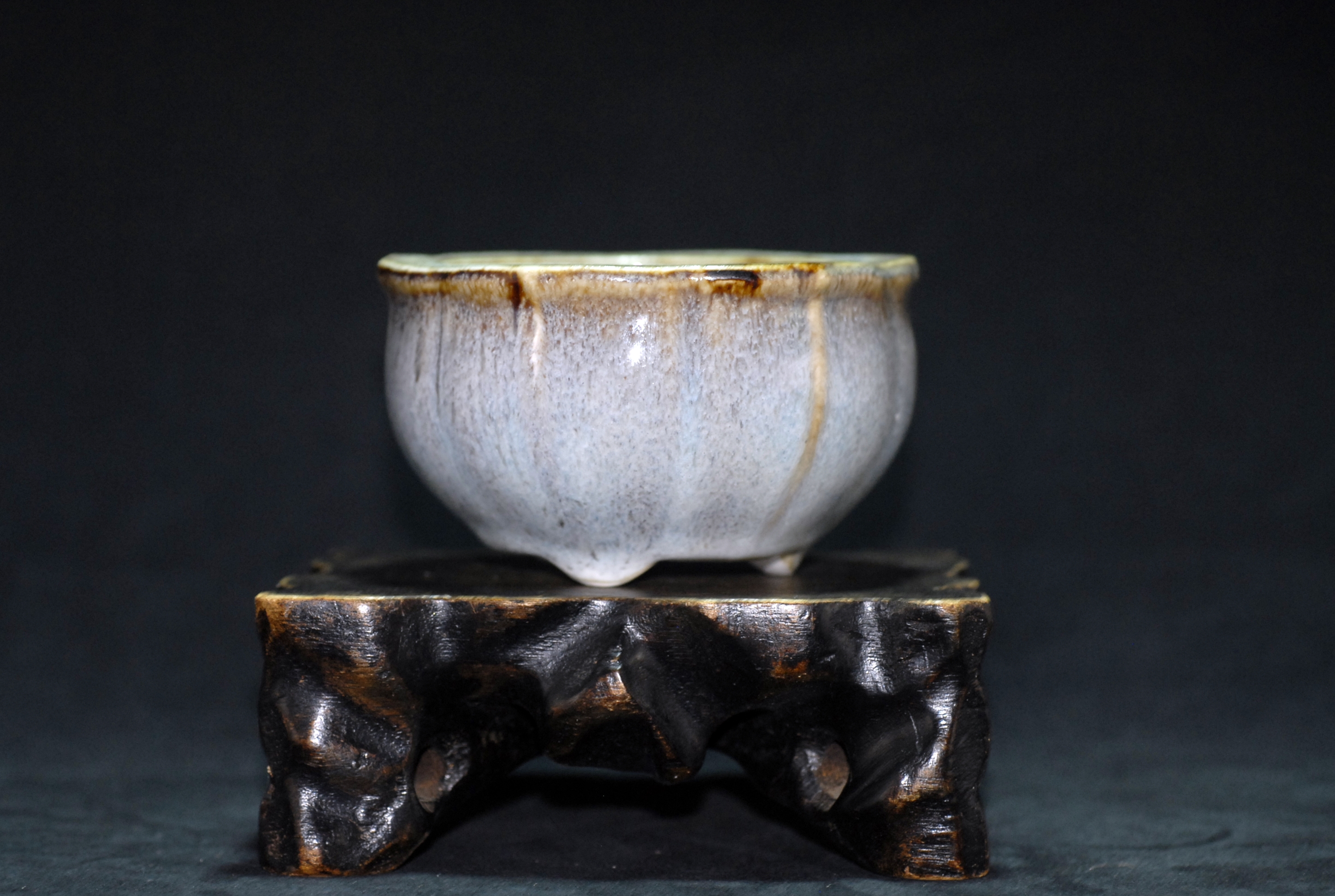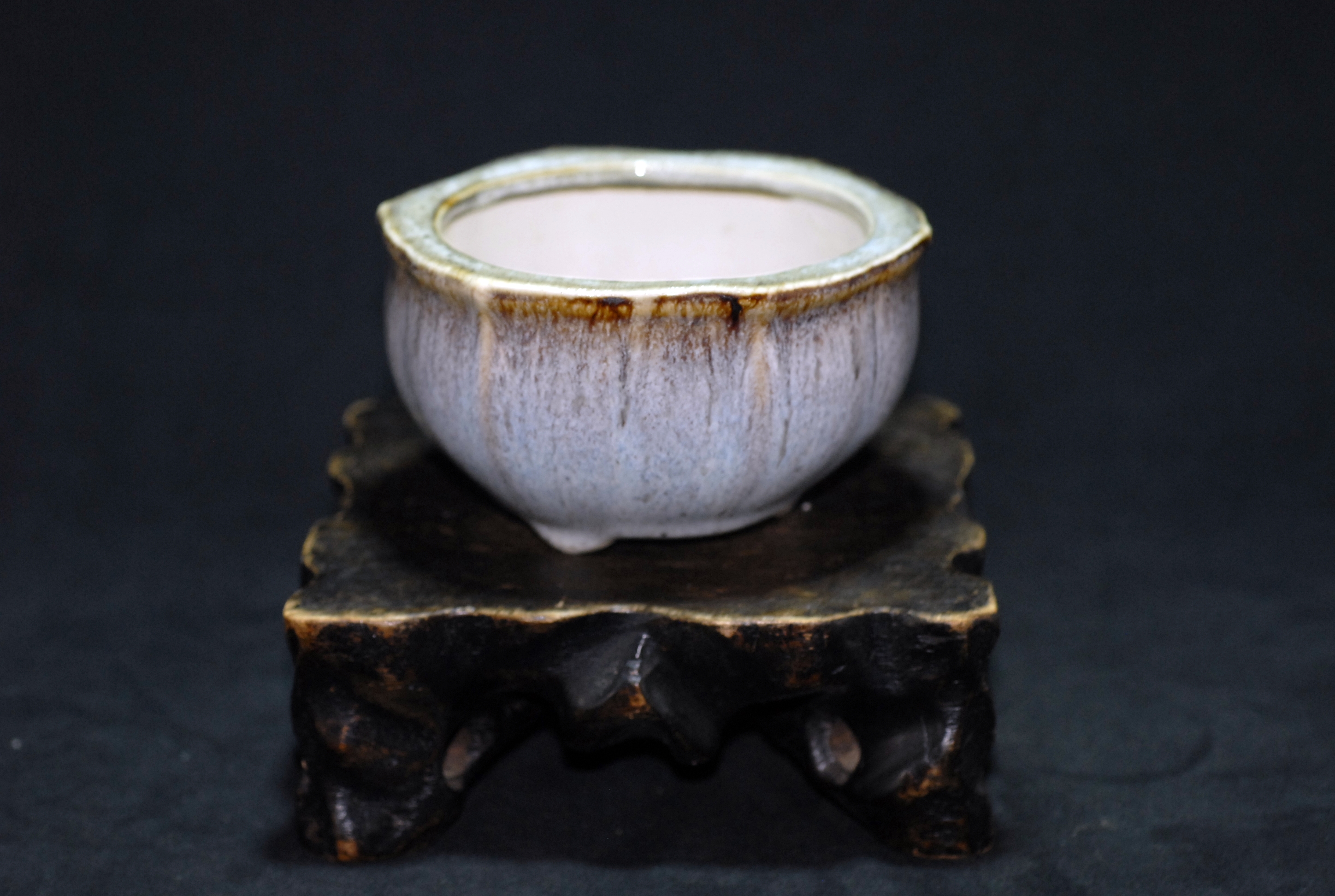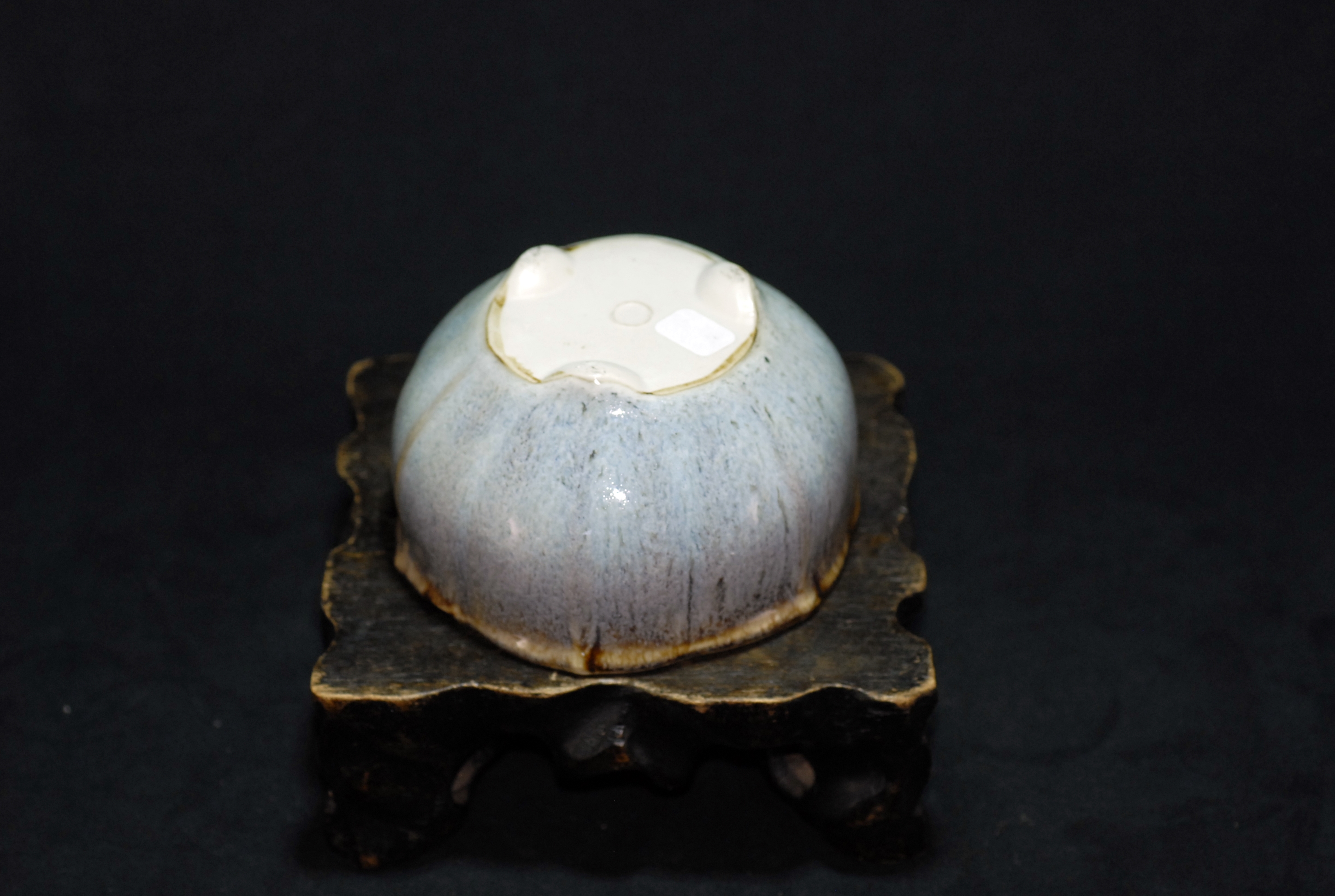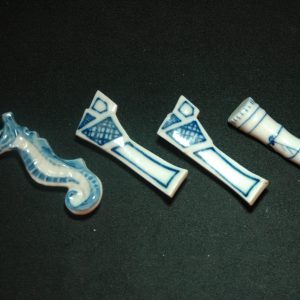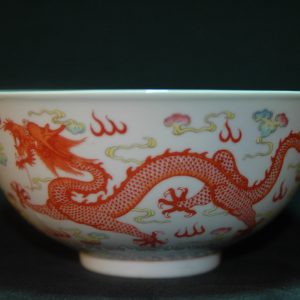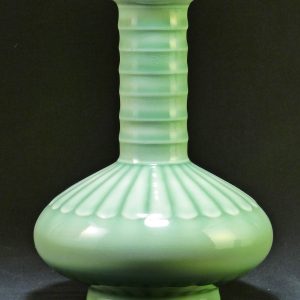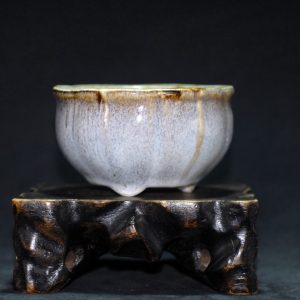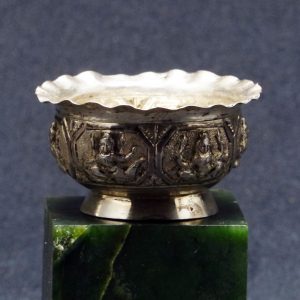Description
钧釉 瓜棱 三足小香炉、鈞釉 瓜棱 三足小香爐
参考:苏富比
September 21
拍品 226 An extremely rare ‘Guan’ hexafoil tripod censer, Hangzhou kilns, Southern Song dynasty |
南宋 官窰三足爐
Property of a West Coast Private Collector
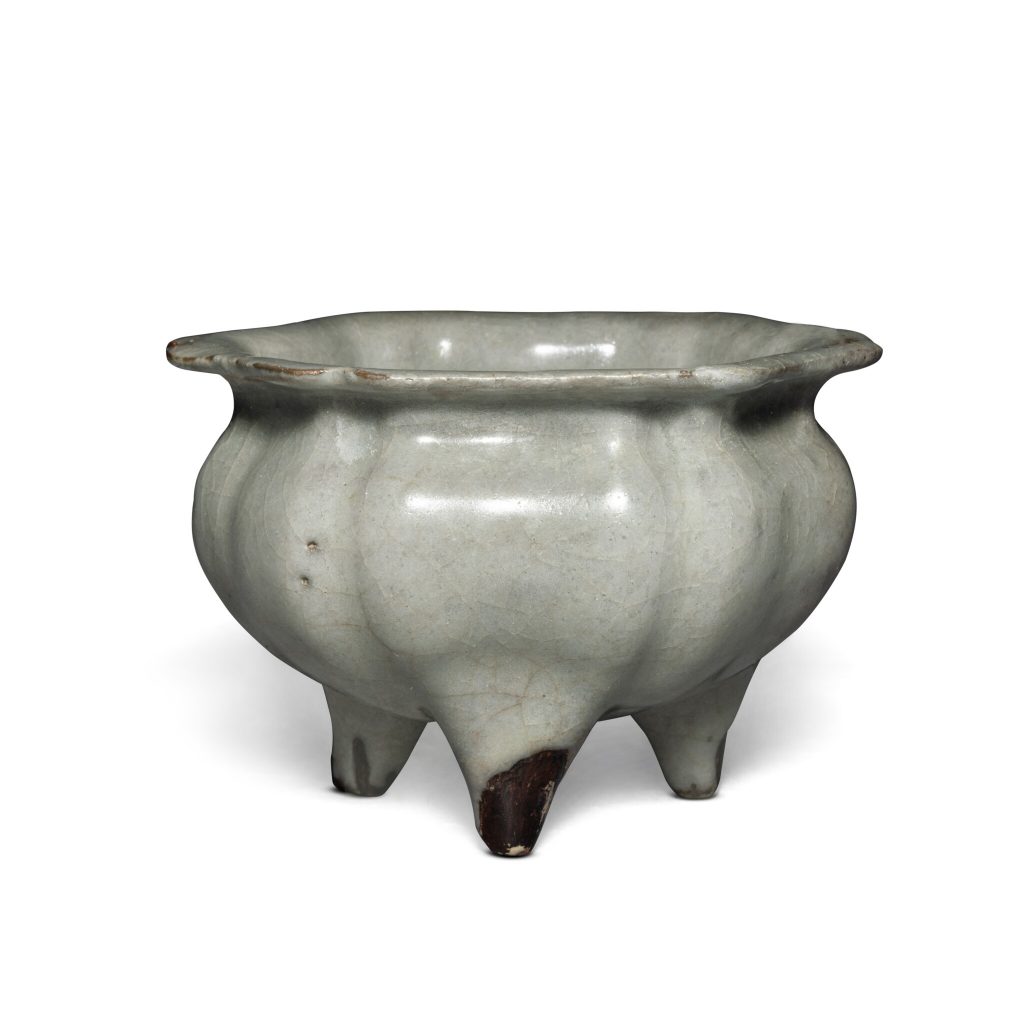
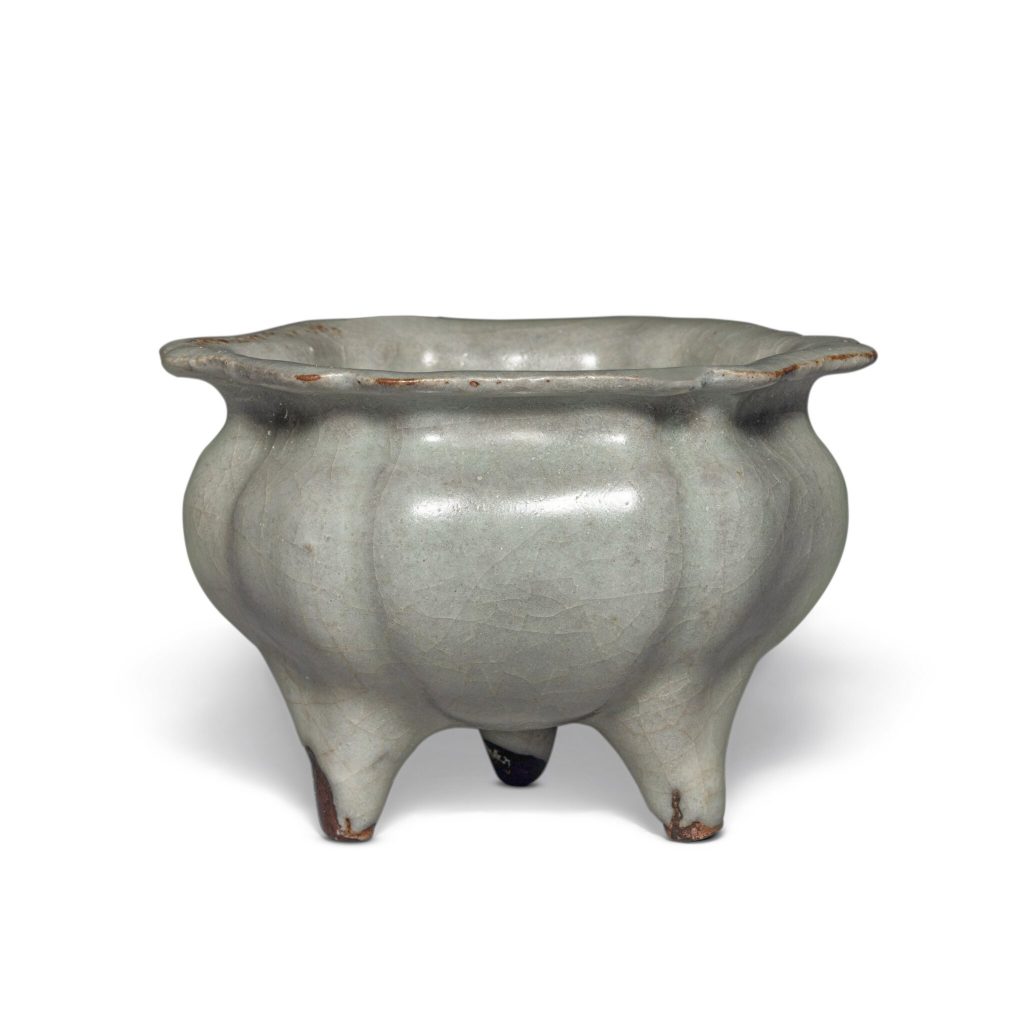
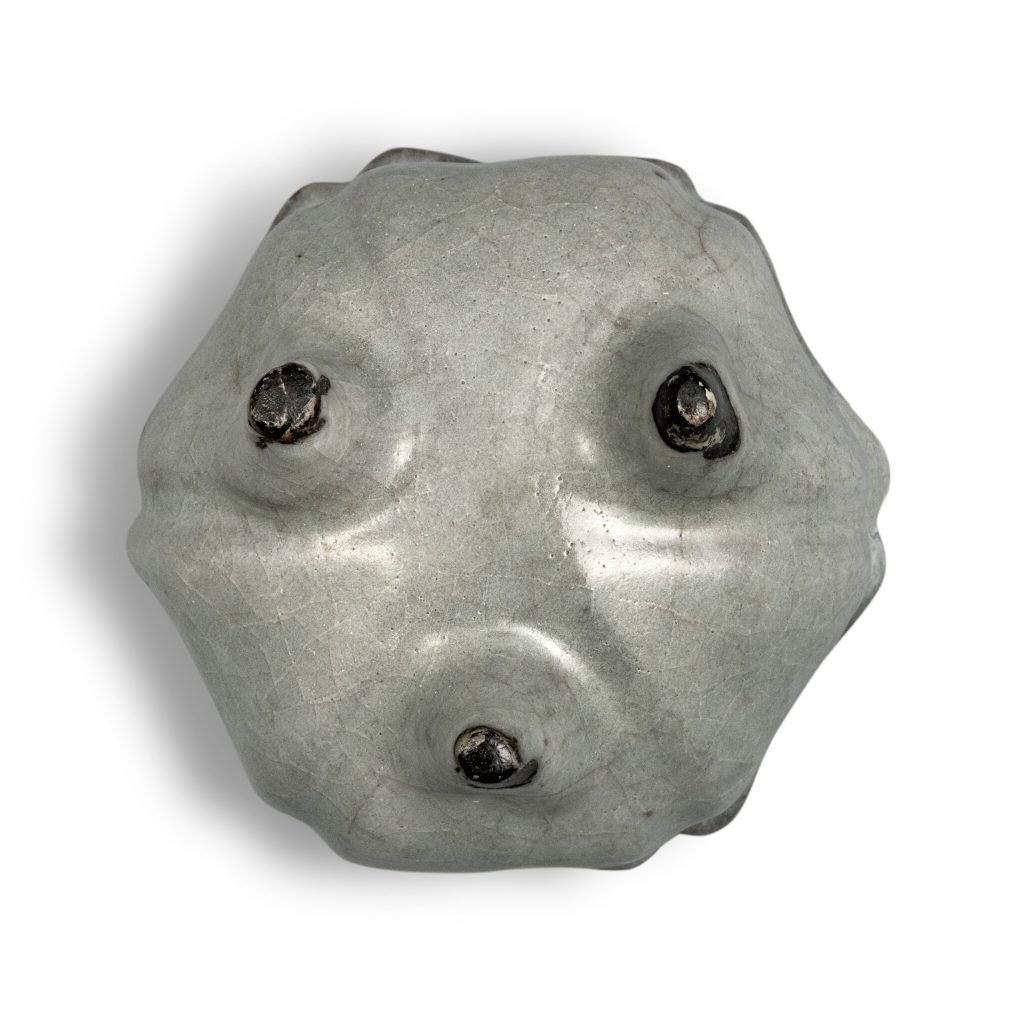
估價 50,000 – 70,000 USD
已售 390,600 USD
描述
An extremely rare ‘Guan’ hexafoil tripod censer
Hangzhou kilns, Southern Song dynasty
南宋 官窰三足爐
Width 4⅜ in., 11 cm
狀況報告
Two small areas of the rim and the unglazed tips of the feet restored with associated overpaint. There are scattered remnants of old overspray to the underside of the lip and the interior of the censer. Overall with age-consistent wear and minor firing imperfections, including areas of kiln grit to the rim and interior.
口沿两处及足未上釉部分经修补,连带补绘。口沿下方及炉内见少许补釉痕迹。整体表面见正常磨损及少许窰烧瑕疵,口沿处及内壁见少许粘砂。
出處
The Mount Trust Collection.
Christie’s London, 19th April 1983, lot 35.
China House of Arts, New York.
Mount Trust 收藏
倫敦佳士得1983年4月19日,編號35
China House of Arts, 紐約
展出
The Mount Trust Collection of Chinese Art, Victoria and Albert Museum, London, 1970, cat. no. 74.
Archives. Ancient Chinese Arts, China House of Arts, New York, 1984, cat. no. 26.
《The Mount Trust Collection of Chinese Art》,維多利亞與阿爾伯特博物館,倫敦,1970年,編號74
《Archives. Ancient Chinese Arts》,China House of Arts,紐約,1984年,編號26
圖錄說明
Guan yao, the fabled ‘official ware’ specially created for the imperial court of the Southern Song (1127-1279) in Hangzhou in south China, is amongst the most desirable and certainly one of the rarest types of Chinese ceramics. Its elegant, unassuming simplicity belies its technical sophistication, and showcases Chinese potters at the height of their ingenuity, technical capabilities and aesthetic vision.
When the Southern Song court looked to commission a new official ware, the forms of archaic ritual bronzes or jades provided the most important inspiration. During this time, archaic bronzes and jades had begun to be excavated, researched and collected as symbols and witnesses of a blessed era of Chinese history, due to their central function in important state rituals in antiquity.
The present incense burner is not directly copied, but clearly based on an archaic bronze li vessel. The exquisite, unctuous glaze of the present vase with its smooth pleasing texture, milky-blue tint and subtle gloss was achieved through gradual application of multiple layers and presumably successive firings. The dark blackish-brown body visible on the feet adds depth to the glaze and gravitas to the whole object, as it subtly accentuates the shape.
Guan ware is mentioned and lauded already in contemporary texts of the Southern Song period. According to those texts, Xiuneisi, the Palace Maintenance Office, set up a kiln in the new capital, present day Hangzhou, to produce wares modeled on the official ware of the Northern Song. Somewhat later, another kiln at Hangzhou produced a similar but lesser ware. The basic message of these reports appears to be supported by archaeological research, since two different kiln sites have been explored at Hangzhou, one at Wuguishan, south of the former imperial city, the other at Laohudong on the site formerly occupied by the imperial city. Because of their locations and the different qualities of the sherds recovered, the Wuguishan kiln has been interpreted as the (lesser) Jiaotanxia kiln; the Laohudong kiln as the exalted Xiuneisi manufactory. It is difficult, however, to link the best examples of guan ware to either kiln site.
The form of the current incense burner is extremely rare, but two closely related examples are published: one from the Heeramaneck Collection, illustrated in Warren Cox, The Book of Pottery and Porcelain, vol. I, New York, 1970, fig. 292, and another from the collection of Richard Bryant Hobart, sold at Parke-Bernet Galleries, Inc., New York, 12th December 1969, lot 201, and included in the exhibition Ju and Kuan Wares. Imperial Wares of the Sung Dynasty, Related Wares and Derivatives of Later Date, Oriental Ceramic Society, London, 1952, cat. no. 52. A guan tripod incense burner also modeled after an archaic bronze li vessel, but of more rounded ovoid form, formerly in the collections of Enid and Brodie Lodge and J.T. Tai, was sold in these rooms, 22nd March 2011, lot 183, and more recently at Christie’s Hong Kong, 29th May 2018, lot 2902.
参考: 北京保利
2019秋季拍卖会
稽古——私家藏文房陈设与紫砂茗具
5101 清中期 宜钧釉紫砂香炉

宜钧釉紫砂香炉
尺寸 宽10cm
估价 3,000-5,000
成交价 RMB 11,500
宜钧始于明朝,釉层较厚,有天青、天蓝、芸豆、月白等色,胎有紫泥、白泥两种,以欧姓所制最为成功,时称“欧窑”,其中精品稀见,得者当宝之。炉为紫砂胎,双耳,腹部圆润,三足,炉身外施宜钧釉,色泽古雅。整器小巧精雅,耐人寻味。衔接自然法度,精致无瑕,炉身虽无印花雕刻,却隐现一番优雅恬淡之感。此炉器形整体敦实端丽,浑然天成,不失灵巧精致,是为书房陈设雅器。
参考:蘇富比
香港秋季拍賣
亞洲藝術 2014年12月11日
Hong Kong Spring Auctions
Asia Week
巴黎
69 清雍正 窰變釉海棠式花盆
《雍正年製》款

《雍正年製》款

《雍正年製》款

《雍正年製》款

《雍正年製》款
估價 60,000 — 80,000 歐元
拍品已售 103,500 歐元 成交價 (含買家佣金)
清雍正 窰變釉海棠式花盆
《雍正年製》款
27.3 公分 ; 10 3/4 英吋
來源
Robert Hatfield Ellsworth,紐約
1980 年10月8日得自Robert Hatfield Ellsworth,紐約
相關資料
本品盆身罩施窰變釉,濃豔瑰麗。外壁藍、紫、紅釉彩潑灑流動,繽紛華美。內施淡藍釉,釉面泛淺褐,內外釉色對比分明。窰變釉,多富變幻,間雜彩斑,創思靈感或源自元代及明初盛行之鈞窰器。比較柯玫瑰,《Chinese Ceramics. Porcelains of the Qing Dynasty 1644-1911》,倫敦,2001年,頁75,以及康蕊君,《玫茵堂中國陶瓷》,卷3(II),倫敦,2006年,頁456。
本盆器身呈海棠式,撇口,器型或源自一元代鈞窰器造型。水仙盆,器型呈花式,敞口,口沿環飾乳釘,有數種造型。台北故宮博物院收藏一例,圖見《故宮藏瓷大系‧鈞窰之部》,台北,1999年,圖版37。北京故宮博物院另藏一盆例,載於《故宮博物院藏文物珍品全集‧兩宋瓷器(上)》,香港,1996年,圖版31。
仿古鈞瓷釉,復燒於雍正一朝,可參考現存御製佳例數件。本品器型獨特,疑為孤例,唯可參見其他器型之窰變釉作例,同帶雍正年款,包括一清宮舊藏菱花式洗,圖見《故宮博物院藏文物珍品全集·顏色釉》,香港,1999年,圖版178。同書並載數例,見圖版177、179及180。
参考:纽约大都会博物馆 宋 水盂
Water Receptacle, Stoneware with green glaze, China


Object Details
Period:Southern Song dynasty (1127–1279)
Culture:China
Medium:Stoneware with green glaze
Dimensions:H. 1 7/8 in. (4.8 cm); W. 3 11/16 in. (9.4 cm); L. 4 7/16 in. (11.3 cm)
Classification:Ceramics
Credit Line:Harris Brisbane Dick Fund, 1960
Accession Number:60.81.4
Provenance
[ C. T. Loo & Co. , until 1960; sold to MMA]
参考:纽约大都会博物馆 宋 钧釉三足香炉
Incense Burner, Pottery (Jun ware), China

Incense Burner, Pottery (Jun ware), China

Incense Burner, Pottery (Jun ware), China

Incense Burner, Pottery (Jun ware), China
Object Details
Period:Song dynasty (960–1279)
Culture:China
Medium:Pottery (Jun ware)
Dimensions:H. 4 1/2 in. (11.4 cm); W. 6 7/8 in. (17.5 cm)
Classification:Ceramics
Credit Line:Gift of Mrs. Samuel T. Peters, 1926
Accession Number:26.292.9
Provenance
Mrs. Samuel T. Peters , New York, (until 1926; donated to MMA)
Timeline of Art History
Timelines
Central and North Asia, 1000-1400 A.D.
Central and North Asia, 500-1000 A.D.
China, 1000-1400 A.D.
China, 500-1000 A.D.

![[临渊阁]天地一家春](https://www.antiquekeeper.ca/wp-content/uploads/2023/03/cropped-Asian-Art-Wallpaper-Painting3-6-2.jpg)

